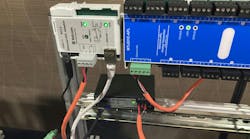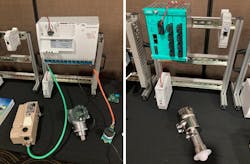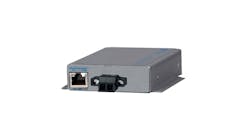Along with refining the Ethernet-APL physical-layer specification itself, several organization members have released switches or gateways that comply with it, while other suppliers are poised to introduce other Ethernet-APL products and/or integrate it into existing components.
For example, during Single-Pair Ethernet (SPE) Education Day on March 28 in Raleigh-Durham, N.C., several suppliers presented Ethernet-APL products:
- Phoenix Contact showed the APL-Field Switch that it previewed in March, and plans to launch at the ACHEMA event in June. It has 24 ports, each capable of Power Class A and beyond, is Ex Ia rated, and in this case, was connected to a Samson valve actuator, Supcon pressure transmitter, and Endress+Hauser temperature transmitter;
- Pepperl+Fuchs demonstrated FieldConnex Ethernet-APL DIN-rail field switch with eight ports, which uses Profinet to communicate with eight, 16 or 24 spur ports, and is Ex Ic IIC rated, allowing it to be installed in Zone 2/Div 2 areas; and
- Relcom exhibited two Ethernet-APL adapter/media converters that it introduced in March 2023, including one that converts RJ45 signals to Ethernet-APL, and another that converts USB communications. It also showed its MTL831C-APL temperature multiplexer, which takes signals from thermocouples and RTD sensors and sends them through an Ethernet-APL port, so their measurements can be relayed to a control system via Modbus TCP protocol (Figure 1).
Cyrus Kelly, president of Relcom Inc., explains, “In the past we had two options for multiplexing temperatures to a control system. The first was a system consisting of a proprietary protocol temperature multiplexer, an intrinsically safe isolator, and a gateway to convert to Modbus over RS485. The second option was a Foundation Fieldbus temperature multiplexer. Now we’ve got Ethernet-APL’s advantages, including a 1,200 meter reach, far greater speed, more power, and simple point-to-point IS area installation with no gateways, no special power supplies, and no terminators.”






